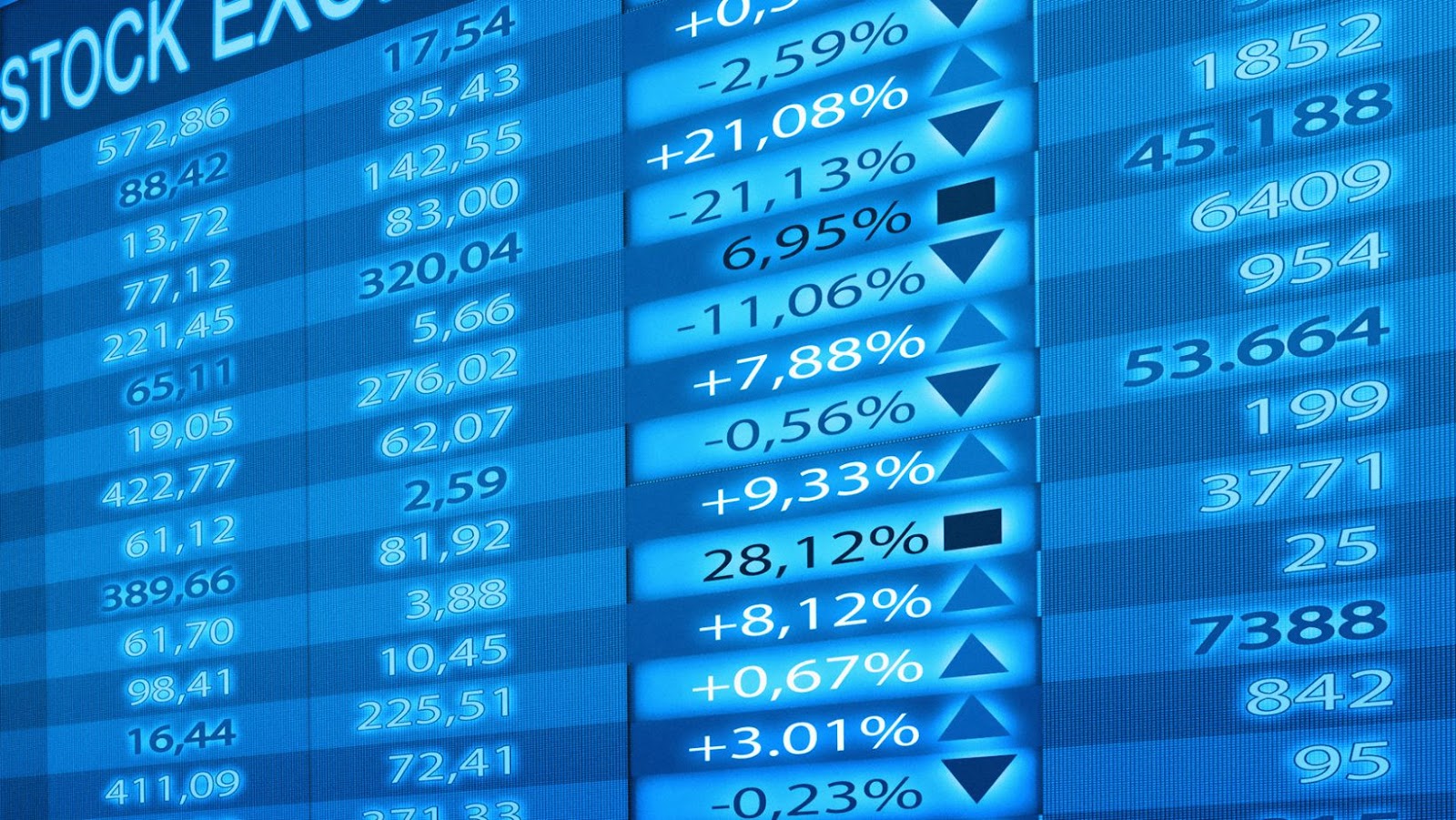
Elm, a business-to-business technology company backed by Saudi Arabia’s sovereign wealth fund Public Investment Fund (PIF), has announced its plans to go public on the Tadawul – the Saudi Stock Exchange. The company has set a target of raising $820m through its initial public offering (IPO).
Let’s take a closer look at the plans of Elm’s listing on the stock exchange.
Saudi Arabia’s PIF-backed Elm set to raise $820m through Tadawul IPO
Elm is a functional programming language developed in 2012 as an alternative to JavaScript for front-end web development. Although it wasn’t created for this purpose, Elm has become popular among developers because of its low-maintenance code and scalability. As a purely functional language, Elm leverages immutable values, meaning that any variable they are given will not be updated when the code is run through an interpreter. This creates code that runs faster, with fewer errors and refactoring requirements.
Elm is statically typed and emphasizes simple data structures such as strings, numbers and records over objects. It also includes built-in features such as type inference and automatic garbage collection, making coding more efficient and bug-free without explicit declarations or manually switching between garbage systems. Elm’s architecture also allows it to handle HTTP requests easily to send data between multiple components on the same page.
Developers are drawn to Elm due to its strong combination of powerful yet simple coding conventions that make reasoning about their application’s outcomes more straightforward than ever before. By writing their UI in Elm code written in an HTML embedded DSL, the chances of writing erroneous code are reduced drastically by making sure your data shapes & types match from start to finish throughout your application. To help developers get up and running with Elm quickly, there is a vibrant online community of experienced users providing resources & tips from all over the world. These tips often prove invaluable when debugging complicated problems or exploring cutting edge design patterns.
Overview of Saudi Arabia’s PIF-backed Elm’s IPO
Elm is a leading Saudi Arabia-based integrated e-commerce and logistics platform that aims to facilitate and enhance the user’s online shopping experience. Elm has decided to go public on the Saudi Stock Exchange also known as Tadawul. This initial public offering will offer unique opportunities for local and foreign investors.
Saudi Arabia is home to the region’s biggest stock exchange, with more than two dozen listed companies, including Aramco, Al Rajhi Co., Tabuk Cement and Samba Financial Group. This offers investors an interesting opportunity of investing in a promising firm in the region. In addition, Tadawul created history by launching its long awaited Initial Public Offering (IPO) platform on September 30, 2019 making it one of only six exchanges globally that offer such an investment opportunity.
In 2020, Elm became one of four companies whose shares have been publicly listed through Tadawul’s IPO program – along with Azmeel Solar Services Co., Al Atharmah Power Generation Co., and United Wire Factories Co. Elm’s public listing is expected to be driven by strong interest from both domestic institutional investors as well as foreign investors who are looking for access to high-growth companies in the fast growing Middle East markets.
The move also signals how forward-thinking policymakers in Saudi Arabia are working towards cementing their place as a regional leader in providing innovative financial services for businesses seeking funding for large projects. Additionally, Elm is enabled by its majority stakeholder, Public Investment Fund (PIF), which already holds 45% of its shares through government investments made during private financing rounds over the past few years before going public on Tadawul.

Pre-IPO Preparations
Elm, the Saudi Arabia-based service provider, is set to go public on the Saudi Stock Exchange (Tadawul). However, before listing, the company is taking necessary measures to ensure that they meet the requirements of the Tadawul and function by the regulations of the Exchange.
This includes making many pre-IPO preparations. In this article, we will discuss Elm’s pre-IPO preparations to ensure a successful listing on the Tadawul.
Underwriting agreement
A key document in the pre-IPO process is the underwriting agreement. The underwriting agreement is a contract between the company going public and an investment bank acting as an underwriter. Generally, an S-1 registration statement must be filed with the SEC before any shares may be issued and sold through an initial public offering. Included in that registration statement are representations made by both parties regarding future actions on their part as well as indemnification agreed upon by both parties in case of a breach in agreement or dispute.
The underwriting agreement provides details on how many shares will be marketed, what type of securities are being offered, pricing information and overall capital structure, the split of compensation among syndicate members, including quiet and piggyback periods for investors to enter at the same price as institutional buyers, lockup agreements for existing shareholders who can no longer trade after their IPO, and other details that must be clearly outlined before launching a successful IPO.
Regulatory filings
Before entering the public markets, a company must prepare the necessary regulatory filings. These filings disclose general information about the company as well as financial data. To comply with Securities and Exchange Commission (SEC) regulations, companies must assess their ongoing compliance requirements — including maintaining internal controls — and ensure they have procedures and policies to detect fraud or any other material changes that may occur post-IPO.
The first filing that a company will make is a Registration Statement on Form S-1 or Form F-1. This registration statement includes detailed information about the stock offering and covers topics such as risk factors, executive compensation, use of proceeds from the offering and other important facts about the issuer. Once this filing is completed it must be filed with, and approved by, SEC.
Once approved by SEC additional documents must be given to prospective investors which include; Prospectus for U.S offerings or Offering Circular for international offerings; Investor Questionnaire; Subscription Agreement; Legal Opinion Letter(s); Blue Sky Reports (if applicable); GAAP Financial Statements; Analyst Research Reports if available etc. The company should also analyze legal contracts causing potential liabilities those contracts may create after becoming publicly traded.
All these steps are vital when preparing for an IPO because they help ensure that current and prospective shareholders access accurate data concerning the company at all times which are crucial in building trust between a company and its shareholders. Additionally, these steps protect a company from being charged with violations of federal securities laws relating to accuracy when dealing with securities matters such as pricing shares before an IPO as well its ability raise capital through trading/selling of stock after listing publicly.

Pricing and allocations
Pricing and allocations are key considerations in any pre-IPO planning. It is important to accurately estimate the value of the shares offered and allocate shares most effectively.
The price of a company’s shares must be predetermined before its public offering, based on current market conditions and expected demand. The company’s underwriters will typically help to provide an expected valuation range, which can be used as a basis for pricing. This will also help determine which potential investors will receive allocations of the shares being offered.
Before pre-IPO planning, it is important to consult with financial advisors and tax professionals to ensure that all legal requirements have been met and that any complex issues have been properly addressed. The advisors should also be able to provide a detailed analysis of how much equity should be allocated for each shareholder involved in the process, taking into account their respective interests in the long term success of the company.
Once appropriate pricing has been determined and allocations agreed upon, it may become necessary to put provisions or restrictions on the sale or transferability of these shares prior to the IPO date. This helps protect all parties involved by mitigating their risk until such time as an official public offering takes place. In addition, special voting rights or rights concerning certain corporate decisions may also be established to better govern pre-IPO operations and preparations before going public.
IPO Pricing
Elm, a business-focused cloud computing platform based in Riyadh, is set to become the first company to be listed on the Saudi Stock Exchange, also known as the Tadawul.
The company, backed by the Saudi Arabia’s Public Investment Fund (PIF), is reportedly aiming to raise $820 million by pricing its initial public offering (IPO) at SAR 25.50 (USD 6.80) per share.
As such, it is important to investigate the pricing for the IPO to gain insights into its potential success.
Price range
When setting the IPO price range, businesses need to consider various factors. They should take into account their company size and recent financial performance, the current market environment and the estimated demand for the shares.
The underwriters and management team work together to set a price range that will be attractive to both new and existing shareholders. Suppose they are successful in their pricing strategy. In that case, they will balance supply and demand at attractive levels, thus ensuring the IPO will be successful while maximizing the stock’s upside potential.
When setting a price range for stocks sold in an initial public offering (IPO), analysts utilize several strategies to establish a fair value for those securities. The most commonly used methods are basing it on comparable companies that have gone public in recent years or by utilizing book value calculation techniques. In cases of highly speculative investments such as biotechnology offerings, analysts may also estimate future earnings potential of a company to set its stock’s value during an initial offering.
Final pricing
The final step in the IPO pricing process involves setting the offering price and the number of shares that will be offered. This is a critical decision as it will directly impact how successful the offering is and ultimately determines how much money goes to the issuing company. To set an effective offering price, several factors require consideration.
Firstly, it’s important to consider market conditions. Ideally, you’ll want to choose a price that will generate interest from investors and encourage them to buy shares in your company. Still, it’s also important that you don’t overprice your stock — this could render it attractive to investors, but also discourage them as they believe they are investing at an over-inflated rate. It may be beneficial to take help from leading investment banks in determining a fair value for your company’s stock before leaving it open for public trading.
When developing a proposed offering price, the issuers and their bankers must also look at comparable data of IPOs issued by similar companies within their industry sector during recent periods (ideally within 6 months). This will provide key insights into pricing trends and allow them to make informed decisions before the share sale process is launched.
Issuers must also know restrictive securities laws which limit certain trades within 10 days after trading begins – secondary sales are not allowed until these restrictions expire thus affecting how many shares each investor can buy initially. Restrictions such as these can also impact share prices when investors don’t get enough stock allocations or if demand turns out to be unexpectedly robust because too few shares were on offer at launch affecting secondary markets or reviving primary market demand post-IPO pricing phase completion. After incorporating these considerations into the equation, potential shareholders should receive adequate investment returns. At the same time, issuers should benefit from an efficient IPO execution process with optimal pricing levels achieved to start generating long-term shareholder value creation opportunities under favorable capital markets conditions.

Listing on Tadawul
Saudi Arabia’s PIF-backed Elm is set to become the first publicly listed company in Saudi Arabia’s Tadawul Stock Exchange with an ambitious goal to raise $820 million. This IPO is considered a major milestone for entrepreneurs and investors, as it will open up many opportunities for startups in Saudi Arabia.
Let’s look at the different aspects of this listing and its significance.
Listing process
The listing process of an issuer on Tadawul is a formal process that requires the preparation and submission of certain documents to Tadawul. It involves applying by the issuer to list its shares or other securities in the exchange, to be traded within a regulated environment. This listing procedure is based on rules issued by Tadawul and regulated by a dispute resolution committee formed by Tadawul for resolving disputes between companies and investors arising from securities trading activity.
Tadawul requires issuers to meet certain conditions to be listed, such as having adequate disclosure provided with timely financial statement updates, obtaining necessary Regulatory approvals, submitting all required documents according to prescribed deadlines and analyzing appropriate regulatory framework before going public. After filing all necessary documentation, pricing advice will be provided and further steps will need to be taken, including approvals from Princes’ Court or Shoura Council (depending on the legal entity). In addition, upon acceptance of listing application, Tadawul allocates a unique security code for each issue/shares/Warrants/Structured products being listed.
The following are specifics steps that make up the overall Listing Process:
- Pre-listing requirements
- Document submissioon
- Calls for clarification & rectification
- Submission of Additional clarifications (if any)
- Issuance of Initial & Final Listing Decisions
- Signing Listing Agreement
- Post-Listing Compliance Requirements
Initial trading
Initial trading of stocks of a company on the stock exchange (the Tadawul) can be classified into two phases. The first phase (following the payment of the Initial Public Offering subscription proceeds through the Credit and Collections System) is known as the Subscription Period where only part of the Company’s shares are traded at prices set in accordance with market demand while maintaining a limit on volatility. This period starts on the fourth day following that on which the value date for receipt of Initial Public Offering subscription proceeds occurs, and lasts for six consecutive days, subject to extension if authorized by CMA.
The second phase is known as Trading on an Equilibrium Price (or “TEP”), whereby one or more related securities such as warrants, derivatives and ETFs are admitted to trading simultaneously with shares listed following their TEP allocation auction procedure. The entire market capitalization is admitted to trading during this phase at the TEP which includes any subscriptions received during Subscription Period that were not previously accepted. Trading begins two days after Payment Date and continues until Suspension Day when no further transactions occur.
Post-IPO Performance
Following Elm’s planned $820m initial public offering (IPO) on the Saudi Stock Exchange (Tadawul), a key concern for investors is how the company will perform post-IPO.
In this article, we will take a look at the potential post-IPO performance of Elm and analyze the key factors that may influence its share price development.
Share price performance
Post-IPO performance is the performance of a company’s shares following its initial public offering (IPO). Performance is typically measured by the range between the highest and lowest market capitalization attained by a company’s shares over time. Post-IPO performance is important because it indicates investor sentiment on the stock and overall market conditions.
Share price performance is an important measure of post-IPO success, indicating whether investors are bullish or bearish about the stock following its IPO. Generally, companies whose shares go up after the listing are perceived to have successful post-IPO performances, while those whose share price drops may be viewed as having poor performances. Factors that affect share price performance include macroeconomic conditions, corporate fundamentals and investor sentiment. These can change rapidly, resulting in fluctuations in share prices both before and after IPOs.
Trading volume
Trading volume is one of the key indicators to assess post-IPO performance. It is an important metric as high trading volume generally implies higher levels of liquidity and therefore more confidence in the stock held. When trading volume increases, there is an influx of investors in the market which often causes prices to rise. Alternatively, when trading volume declines, it can signify a lack of interest in the stock or sometimes a lack of confidence due to news or other factors.
As Elm’s shares are listed publicly on Saudi Stock Exchange (Tadawul) its trading volume reflects all the buying and selling activities related to its shares in the market. As a result, the Saudi Trend composite index shows a quarterly analyzed volatility associated with its traded assets fluctuating during different periods rising above 26% and going below 12%. Generally, above average trading usually points toward good future performance while below average trading may suggest otherwise.
For prospective investors, it is important to analyze Elm’s past volumes adjusted by seasonality and financial statements such as quarterly reports and price earnings ratios (P/Es) before investing in their IPO.
Conclusion
After evaluating all the options, Elm has decided to move forward with its plans to publicly list on the Saudi Stock Exchange (Tadawul). This listing will provide:
- Greater visibility and access for Elm’s investors.
- Expanding its shareholder base.
- Securing further liquidity and creating value for shareholders.
Making this decision involved careful consideration of both local and international market conditions and the fluctuations of global equity markets over the past few months. With this significant milestone achieved, Elm looks forward to taking advantage of a more efficient capital raising process, unlocking value for its shareholders and providing increasing access to liquid capital.
tags = Saudi Arabia’s PIF, Elm, raise $820m through Tadawul IPO, Information security company, elm saudi riyadh 820m ipoelbahrawybloomberg, Public Investment Fund, Riyad Capital


